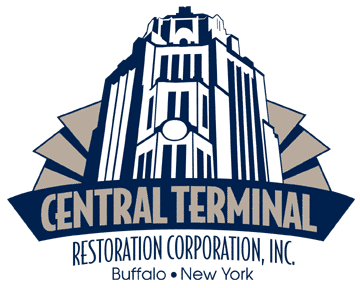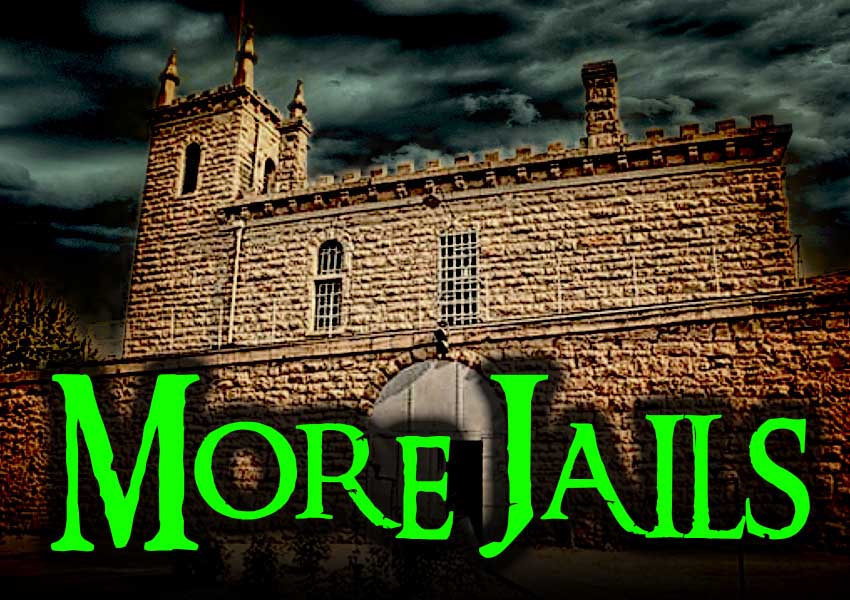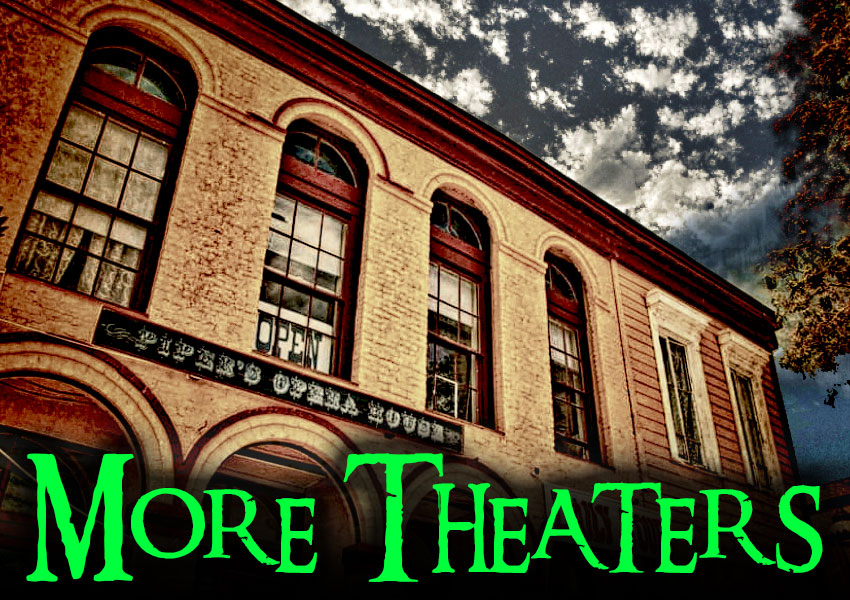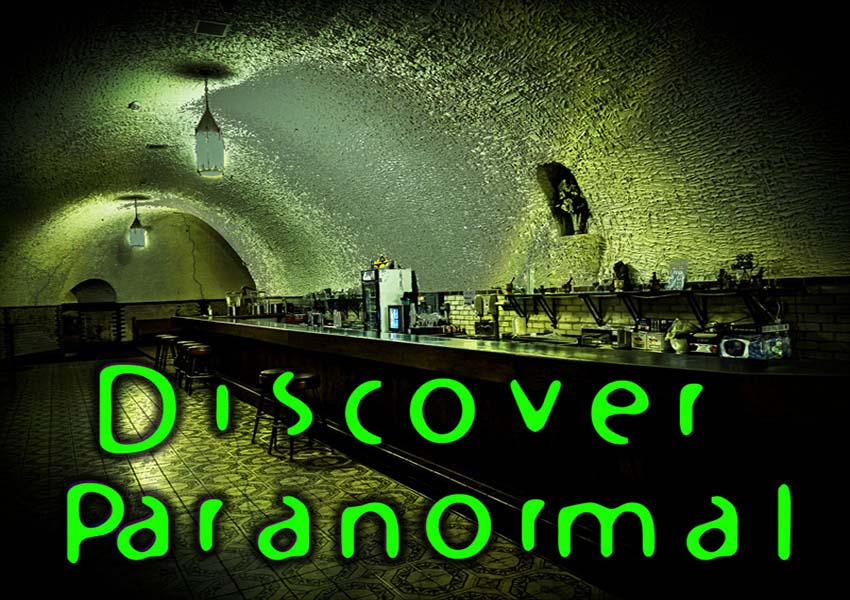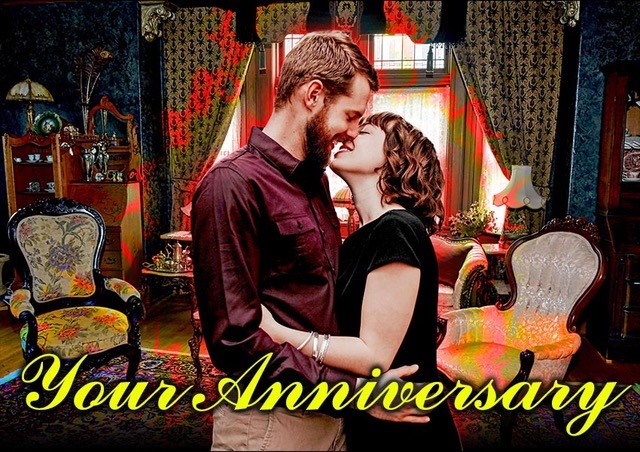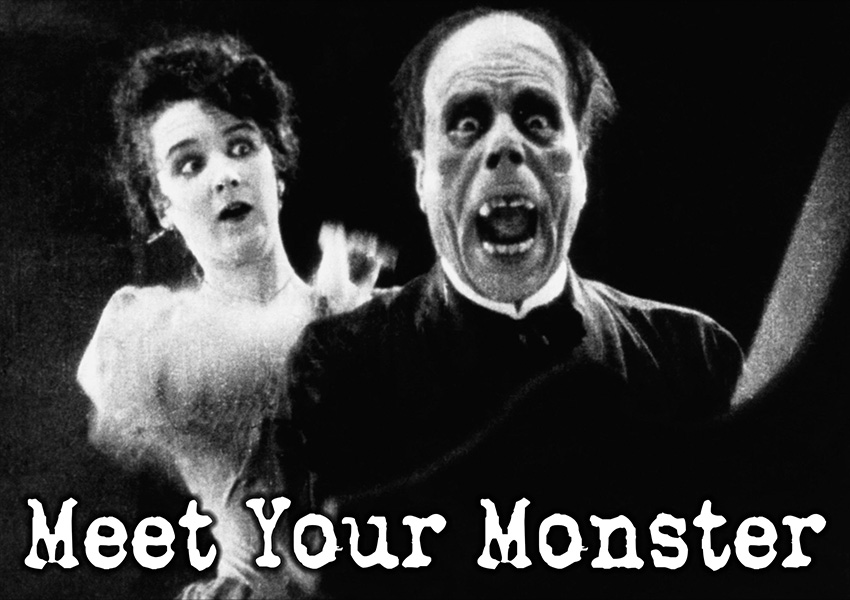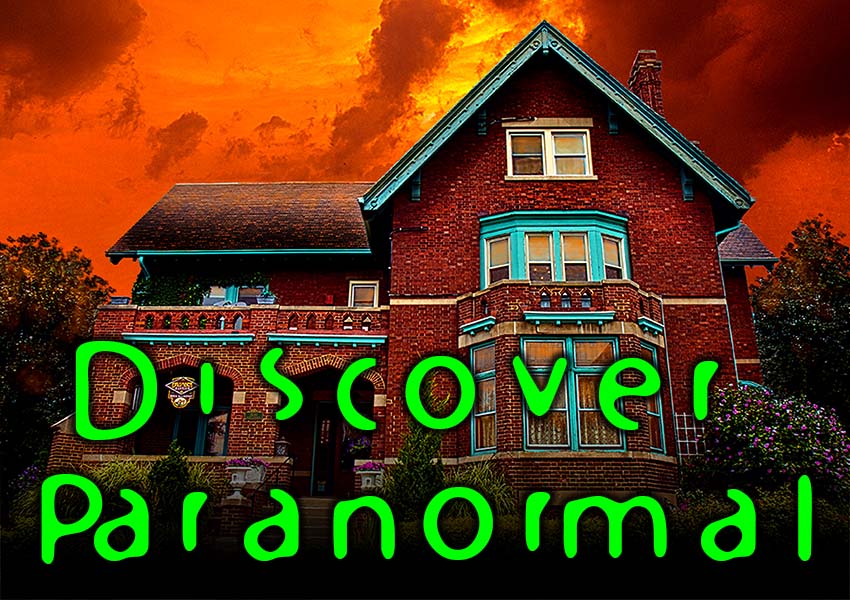Buffalo New York
Buffalo Central Terminal
Spirits who died here from natural causes, from accidents, or suicides using
incoming trains still are active, and have entertained ghost tours for years.
Now that this beautiful building is being renovated for other uses,
these spirits may visit these new businesses to cheer themselves up!

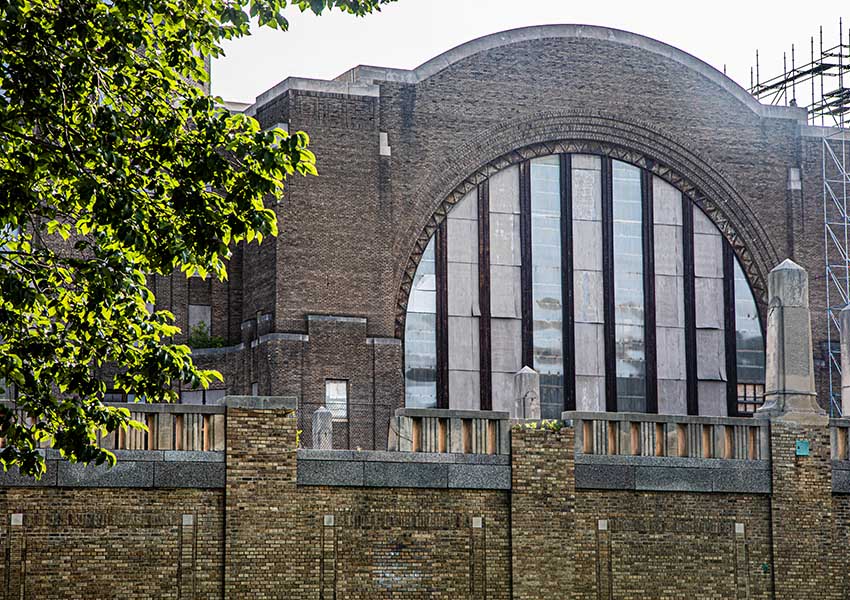
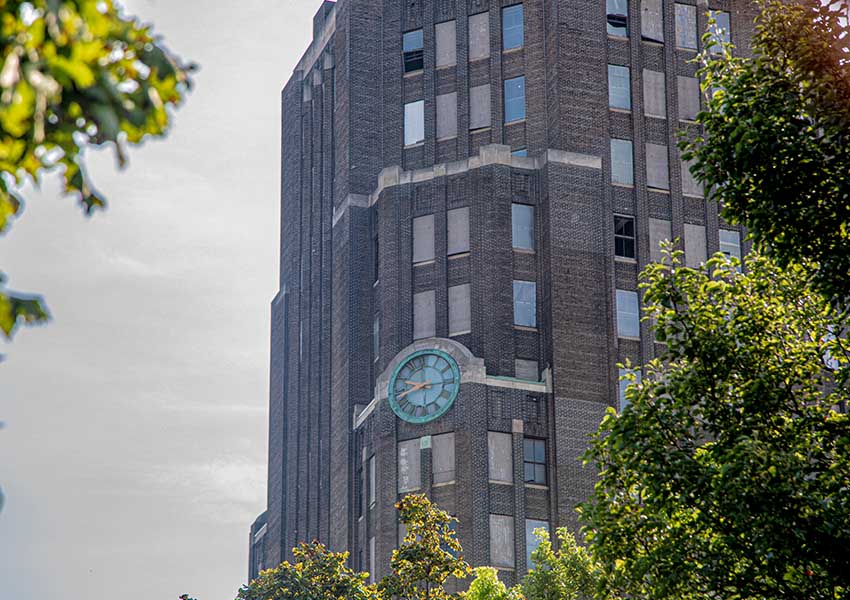
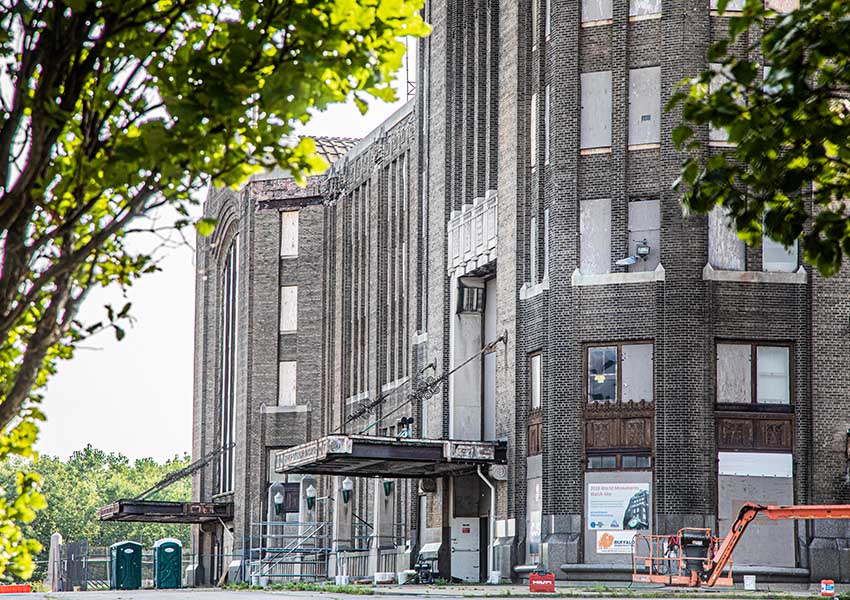
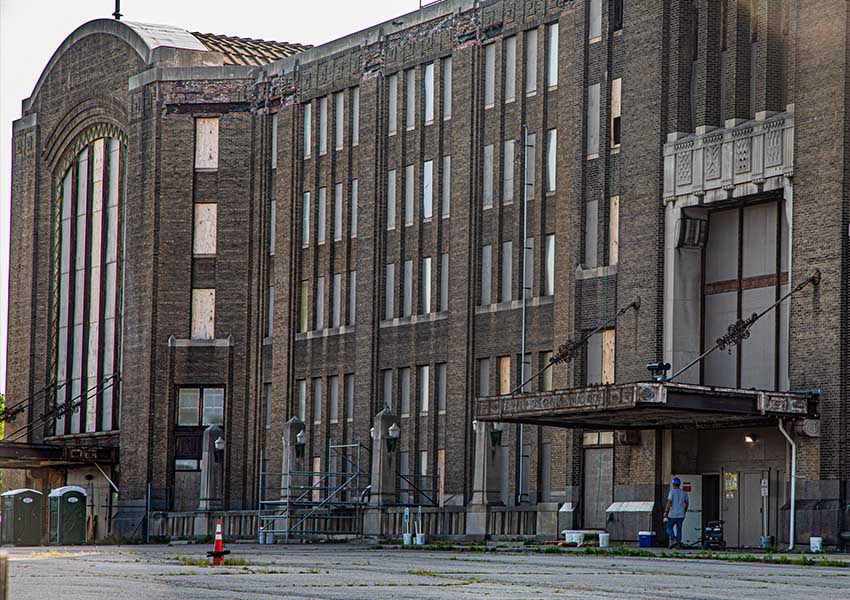
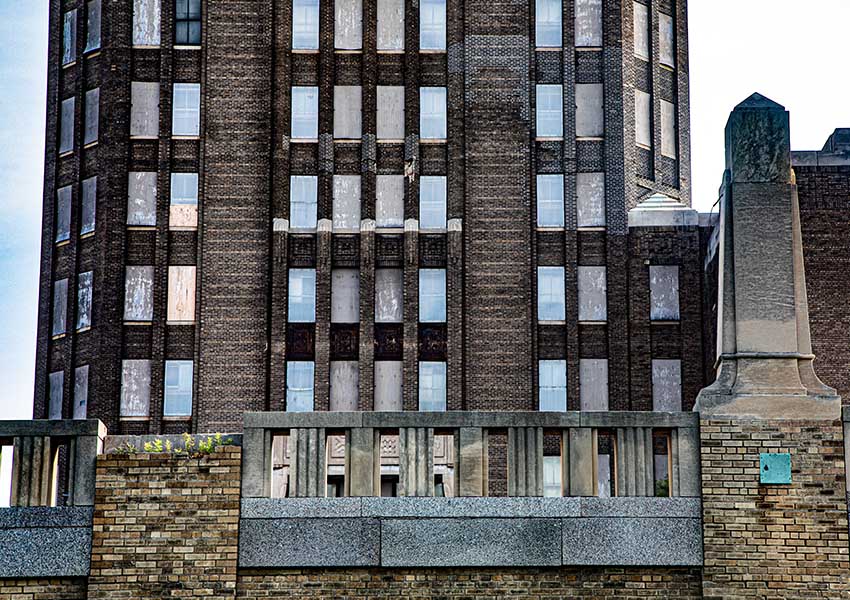
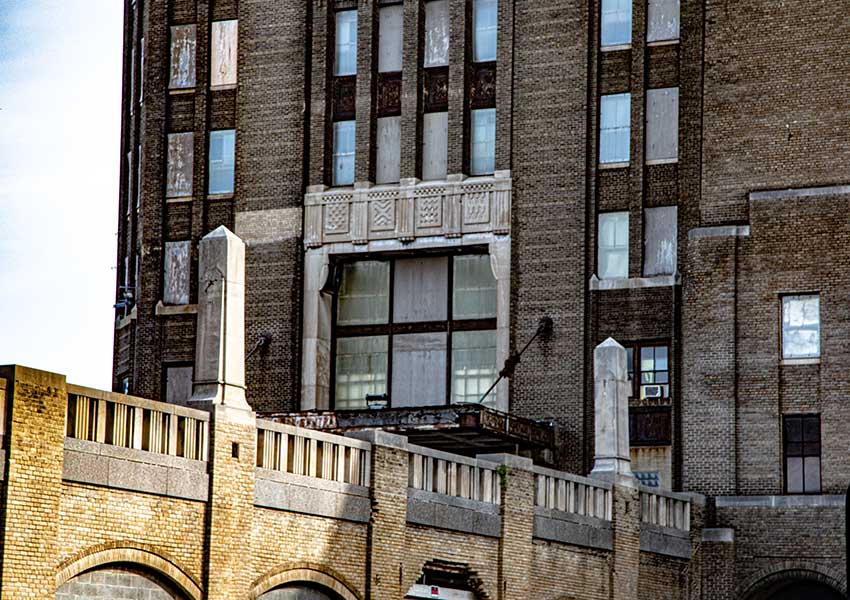
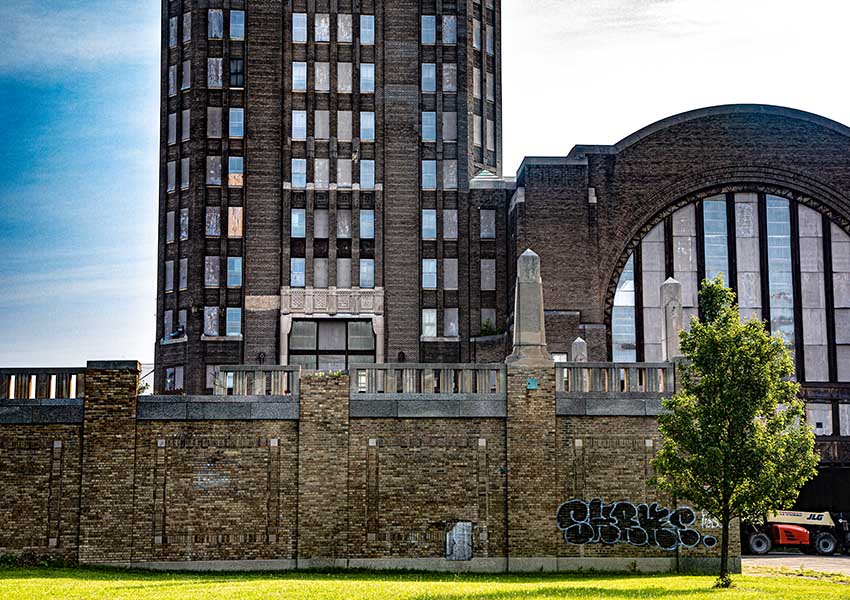
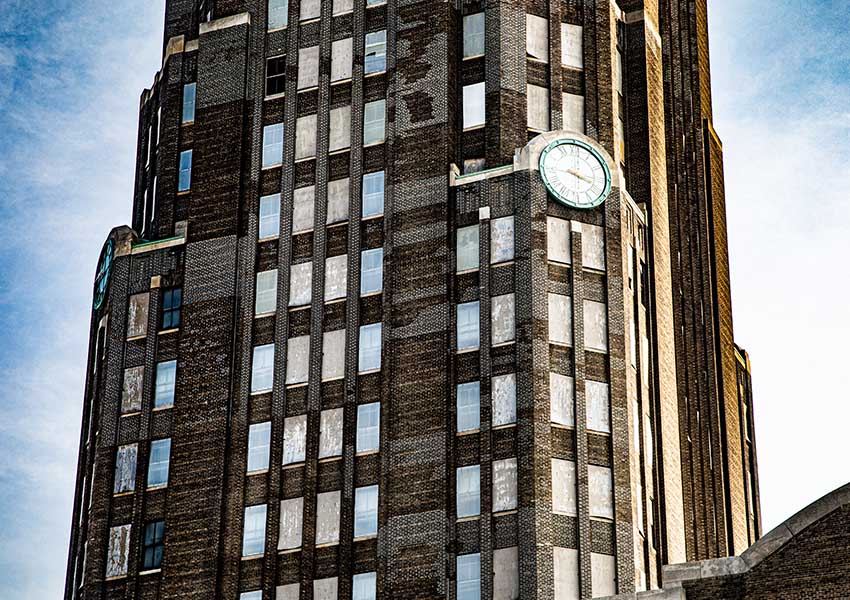
DESCRIPTION
“An iconic Art-Deco architectural jewel in Buffalo’s Broadway-Fillmore District.”
WOW! It was truly an immense Art Deco achievement! The entire property is 500,000 square feet, which includes two main train terminals, concourses, and a seventeen story office building in the middle of it all, plus a nice park area and plaza.
The property has been owned by the non-profit Central Terminal Restoration Corporation since 1977. The Corporation has been restoring this creaky shell of a once terminal over the years through grants, donations, and fundraising, and has restored enough of it to hold concerts, historical and ghost tours, bike rallies, and the annual Central Terminal Train Show and Oktoberfest Party, as well as other events.
On August 9th, 2021, the master plan for the huge property was made public by the Corporation. According to their website announcement, they held “three well-attended public meetings with hundreds of community stakeholders participating, five Community Advisory Group meetings, focus groups, and web-based activities – all designed to gather feedback and ideas from those who are familiar with the building and the neighborhood.”
They also explored possibilities for business tenants through “interviews and analysis with developers, potential users and industry leaders.” Now that they have the input they needed, they have been able to conduct “precedent studies, and an assessment and analysis of the property conditions,” to discover how much more the master plan will cost to rehabilitate the creaky builders, and what additional amounts of money they need to raise.
Undaunted at the huge cost, they have found great development partners, and started on projects they had the money for, with additional plans to raise the 100 million dollars needed to renovate the office building.
As of 2022, the official website proclaims: “Thanks to all the recent hard work of volunteers and donors, as well as donations and grants, the Central Terminal is once again a thriving hub of activity on Buffalo’s East Side. The Central Terminal Restoration Corporation is committed to providing regular access and exciting Buffalo events to as many people as possible… Please submit any event ideas to events@buffalocentralterminal.org.”
HISTORY
By the 1920s, rail travel through Buffalo was exploding, causing issues for the folks who lived and worked in this growing New York town. It was decided the solution was to build a huge two-terminal station east of downtown Buffalo. One terminal was for travelers not planning to visit Buffalo, which would relieve the over-crowding problems suffered by the local populace. The second terminal handled travelers going to Buffalo for work or a visit. Both terminals were connected.
It was going to be a first-class train station, and care was taken to hire the best architects they could find to create a huge, stunning central train station that also had offices and apartments in a seventeen floor tower, together with a way to bring in more funds to provide monetary stabilization to take care of unforeseen expenses.
This Art Deco beauty was built to handle over 200 trains and 10,000 passengers daily, as well as 1,500 New York Central employees.
It was like a small city dedicated to fulfill all the services needed for daily passenger travel and train maintenance. It included shops, a restaurant, soda fountain, parking garage, Pullman Service Building, Coach Shop, Ice House, and Power House along with other services required for daily passenger operations.
The cost ran into the millions of dollars, but no one complained!
Although the Central Terminal had originally opened for business just before the 1929 Great Crash that brought on the Great Depression, this earth-shattering event didn’t affect their travel business. The Central Terminal remained very busy, bustling with people throughout the 1930s and climaxing in a frenzy of activity during World War 2, not showing any signs of decline until the beginning of the 1950s.
During World War 2, gas rationing inspired people to take the train, along with supplies and military folks on their way to or from their service obligations. German P.O.W.s were even assigned to work on the maintenance crew which helped keep the place up to snuff, despite the wear and tear of such extensive use.
By 1950, the need for train travel started to wane as cars become a more realistic way to get where you wanted to go, with the added benefit of giving people the freedom to set the agenda.
With such a huge central train station not needed anymore, New York authorities looked for solutions to keep the station economically self-sustaining and viable. Finally, in 1956, the entire property was put on the real estate market for one million dollars, 1/14ths of its original cost. There were no takers.
Not wanting the expense of keeping up this mammoth of a train station, the New York Central Railroad asked permission of the Public Service Commission to abandon it, which they did, discontinuing the Buffalo/Niagara Falls service in 1959. The future didn’t look too bright, as no one wanted to use it for another purpose, or tear it down at the cost of twelve million dollars. Apparently, this grand old lady was built to last generations.
Yet, the New York Central Railroad was still responsible for the taxes on the property, as they were not able to sell it. To lower the tax bill, some buildings on the property were torn down in 1966: the Pullman Service Building, the Coach Shop, the Ice House, and the Power House.
Things brightened a little in 1968, when New York Central Railroad merged with Pennsylvania Railroad in a last-ditch effort to survive. They became the Penn Central Railroad system, and became the second owners of the property. This only prolonged a little of the inevitable, and Penn Central went bankrupt in 1970.
Through the years, the old terminal changed from a beautiful Art Deco Queen to a creaky fixer-upper, and a huge eye-sore for the surround neighborhood, unloved, unused, and an annoyance to those who lived nearby.
In 1981, the first private owner in a long time with the potential power and the desire to save the terminal, was real estate developer Tony Fedele, who loved the buildings here, and moved into an apartment on the third floor of the office building. His dream was to develop business, as well as protect and restore the local area. He was able to get it listed on the National Register of Historic Places and as a historic place on the New York State Register.
But the state taxes on this 500,000 sq ft property did him in financially, and he was foreclosed on in 1986. The terminals and office building were sold at auction to business man Thomas Telesco for 100,000 dollars. Amtrak still owned the train concourse.
Unfortunately, Mr. Telesco wasn’t interested in restoring this grand building. He began to sell the Art Deco treasures, like the clock on the office building, and other items like the lamps, railing, ornamental details, and anything else thought to be valuable.
The Buffalo Central Train Station was essentially abandoned once again to become an even more creaky, decaying-into-ruins shell of its former self, waiting for someone to wake up and preserve it.
To the rescue came an organization formed of concerned movers and shaker who called themselves the Central Terminal Restoration Company. They complained to Thomas Telesco in 1997 about the lack of progress in restoring and redeveloping this huge property. Telesco offered to sell them the entire property for one dollar and the deal was done.
Scott Field, Tim Tillman and Tom Huyvnick, along with Michael Miller and Russell Panlak, were dedicated preservationists with business smarts and the drive to get things done, the perfect group to lead Central Terminal Restoration Corporation.
These gifted individuals knew how to apply for grants, shame the Buffalo City Council into giving donations, and were very successful in fundraising. They knew how to manage the funds and started on the long road to revisioning new purposes for these Art Deco buildings and its property, as well as restore and refurbish these historic treasures.
They found the original office tower clock and bought it back for 25,000 dollars, as well as some of the other Art Deco items previously sold. They had the clock fixed and remounted on the tower.
Since 1997, a boatload of work has been done in stabilizing and restoring the buildings on this property, probably much to the relief of people in their neighborhood. To include the community at large, they started to have events here starting in 2006. They held the first ever Buffalo Central Train Show, Buffalo Brewfest, and the annual picnic on the plaza for Oktoberfest.
Their efforts and restoration successes were noticed by the National Trust for Historic Preservation in 2011. This important group decided to have their annual conference in Buffalo that year, holding their sessions and receptions at Buffalo Terminal Central Train Station.
On the official website, the Master Plan “redefines the Buffalo Central Terminal’s future as a vibrant local and regional destination supporting economic and social opportunities to the Broadway-Fillmore neighborhood, Buffalo’s East Side, and the City of Buffalo and Western New York. The Plan was developed in partnership with SmithGroup, James Lima Planning + Development, Barbara A. Campagna/Architecture.”
After revealing the Master Plan for the property in August of 2021, they have gotten busy accomplishing their progressive agenda, while fundraising and offering events in the restored Buffalo Central Terminal spaces that raise money, and generating interest in what is planned here. Kudos to them!
HISTORY OF MANIFESTATIONS
When people have to give up a property they love due to their circumstances, they sometimes claim the property as a spirit and reside there.
Hartford Twain House, CT (Mark Twain, his wife and surviving daughter moved out of their forever dream house because Twain didn’t handle money very well, and his daughter Susie died there. After it was fully restored, the whole family moved back inside as spirits, along with a few servants.)
Edith Wharton Estate: The Mount, MA (Edith and her husband Teddy had to sell their beloved forever retreat when they had to divorce due to Teddy’s mental issues. Now that they are spirits, they both reside here, pleased that the living have made it into a museum. They act in partnership with other visual and theatric arts organizations.)
Whaley House Musuem, CA (After a family tragedy and a business failure due to arson, the Whaley family had to leave their beloved home. As spirits, they moved right back inside to take care of their still-grieving daughter, and other spirit children, and enjoy their home in peace, sharing it with the living.)
Buffalo Central Terminal, NY (Though he lost his beloved Central Train Station while alive, the spirit of Tony Fedele is the spectral supervisor of the restoration efforts and has moved back into his third floor apartment, wary of strangers and volunteers.
During World Wars 1 and 2, many military personnel took planes and trains to get to their vessels or transports to the European or South Pacific Theatres. Some of these same men came back in coffins on board, and decided to try to leave the train station, or wait for loved ones to greet them, not wanting to give up the dream of coming home.
Radisson Lackawanna Station Hotel, PA (During World War 1, remains of soldiers killed in the European theatre were stores in the basement of this station.)
Kansas Aviation Museum, KS (Some of the World War 2 soldiers that flew out on planes to join the war effort came back in coffins. Some of their spirits stayed at this airport.)
Union Train Station, UT (A few spirits of soldiers who died of their wounds found ways to entertain themselves.)
Buffalo Central Terminal, NY (Spirits of soldiers have decided to stay here, along with spirits of their family members. Some spirits don’t want to face the reality that their loved one died, so they patiently wait for them to arrive.)
People who die suddenly or unexpectedly in accidents sometimes deny their deaths, and continue on with their lives as best they can.
Union Train Station, UT (The spirit of an employee doesn’t believe that he died in an accident here and still shows up to work!)
Cleveland Grays Armory, OH (A caretaker who died suddenly from a heart attack in the middle of a drill auditorium has returned in spectral form.)
Rio Grande Railroad Depot, UT (The spirit of a female who died diving in front of a train to rescue her engagement ring likes to stay in the women’s restroom and the cafe.)
Buffalo Central Terminal, NY (Throughout the years, people have died suddenly in this station from medical emergencies like heart attacks, or falling off the platforms. They have returned in the afterlife.)
(Spirits of two children who may have died suddenly of disease or accident in the office building apartment where they lived have been seen by the living.)
(During the years when it was abandoned, homeless people would break inside to stay during the cold winters, and wound up freezing the death. Their spectres now haunt the stations.)
MANIFESTATIONS
The Spirit of Tony Fedele
He finds peace staying in his favorite place, his apartment on the third floor of the tower, feeling better about losing his beloved Buffalo Central Train Station during his lifetime.
He may be possessive of this special space.
When the living come to the third floor (whether they are workmen, volunteers or paranormal investigators) he will walk beside or behind them.
He is afraid that the living will make him leave, a repeat of what happened when he was alive.
He must be encouraged in that the tower clock is back where it belongs.
His disembodied voice answers intelligent questions.
The Spirits of a boy and a girl
These two young spirits like to play in an area on the third floor.
Their disembodied voices are heard, and sounds of them running and playing have been noticed as well.
The Spirit of Rose
She is a spirit who likes to stay in the baggage area.
She doesn’t like men and won’t talk to them.
However, she couldn’t resist the TAPS Ghost Hunters flashlights and communicated with them (flash on for yes).
Other female investigators from other groups have been able to catch EVP’s, as she will talk to them.
She may have had a deadly accident or a fatal medical emergency before she could get on a train, or meet someone dear to her who was coming home to see her.
The Spirit of German P.O.W.
He may have suddenly died from a heart attack while working in the train station.
He may not want to leave yet, because he is still hoping to be released to go back home to Germany.
In his mind, he is still alive, doing a job assigned by his captors.
He has seen other living volunteers or workmen and thinks they are members of his squad.
One volunteer worker doing some repairs in the basement saw a male apparition who clearly spoke to him in German, “Vissan, what are you doing down here?” This scared the volunteer, who didn’t waste time going back up to the stairs on the main floor.
Unknown Spirits
Apparitions and shadows that have been seen by the living suggest that quite a few spirits feel at home here.
A hot spot for these spirits is the main terminal and probably the old train platforms.
PARANORMAL FINDINGS
Contact and personal experiences with these spirits reach back many years.
Workmen and women, contractors, visitors taking historical or paranormal tours, volunteers and paranormal investigators have all become believers as these spirits are not shy about contacting or showing themselves in front of the living.
TAPS Ghost Hunters has investigated at this immense site several times, and have never gone away without hard evidence and personal experiences to report.
In their first visit, shown in Season 4 Episode 17, Steve and Jason heard footsteps walking beside them when they were on the third floor and as they visited Tony’s old apartment.
When they tried to have an EVP session with this spirit, they both heard a disembodied male voice yell, “GET OUT!” This spirit didn’t want them there, as they were encroaching on his peaceful spot.
On a heat thermal gadget, they caught an anomaly on the third floor that went in and out of an office door.
Steve and Jason also made contact with the spirit Rose, in the baggage area room. They used a flashlight to communicate with her. Though she doesn’t like men, it was just too tempting for her not to answer them. She told them that she was a woman and was waiting for a train, by saying yes to their questions via a flashlight, turning it on for a “yes” answer.
STILL HAUNTED?
A big Yes Indeed is in order.
Spirits of travelers, soldiers, employees, German P.O.W.s, children, and an owner (Tony Fedele) are residing here for a variety of reasons, happy to do their part to bring in people willing to pay to see or experience them, with the exception of Tony, who sees himself probably as a supervisor when needed, and as a retiree, enjoying his apartment and third floor office, not particularly happy to entertain visitors.
LOCATION
495 Paderewski Drive,
PO Box 51
Buffalo, New York 14212
(716) 754-6142
info@buffalocentralterminal.org
The Buffalo Central Terminal is located around 2.5 miles from downtown Buffalo, in the East Buffalo area.
Our Haunted Paranormal Stories are Written by Julie Carr
Our Photos are copyrighted by Tom Carr
Visit the memorable… Milwaukee Haunted Hotel
SOURCES INCLUDE
- TAPS Ghost Hunters Show, Season 4, Episode 17
- https://buffalocentralterminal.org/wp-content/uploads/2021/08/2021_08_Master-Plan-Press-Release_V3_FINAL.pdf
- https://www.buffalodigest.com/top-10-most-haunted-places-in-wny-3
- https://buffalocentralterminal.org/
- https://stepoutbuffalo.com/ghost-hunt-central-terminal/
Everything You Need to Know About ghost Hunting at Buffalo Central Terminal, By Jessica Kelly, Published September
Your Road Trip to Milwaukee’s Hot Spots
VIDEOS TO VISIT …
